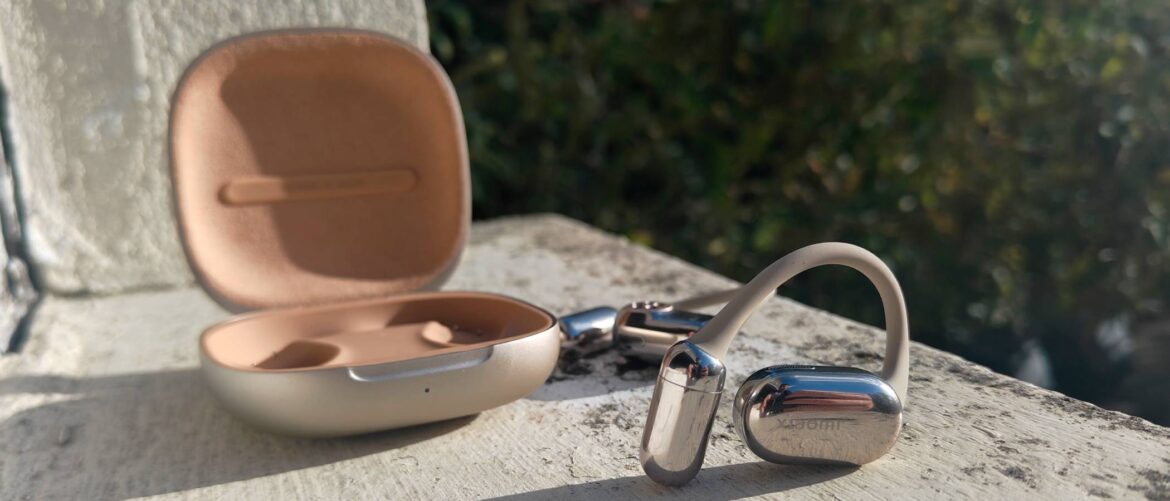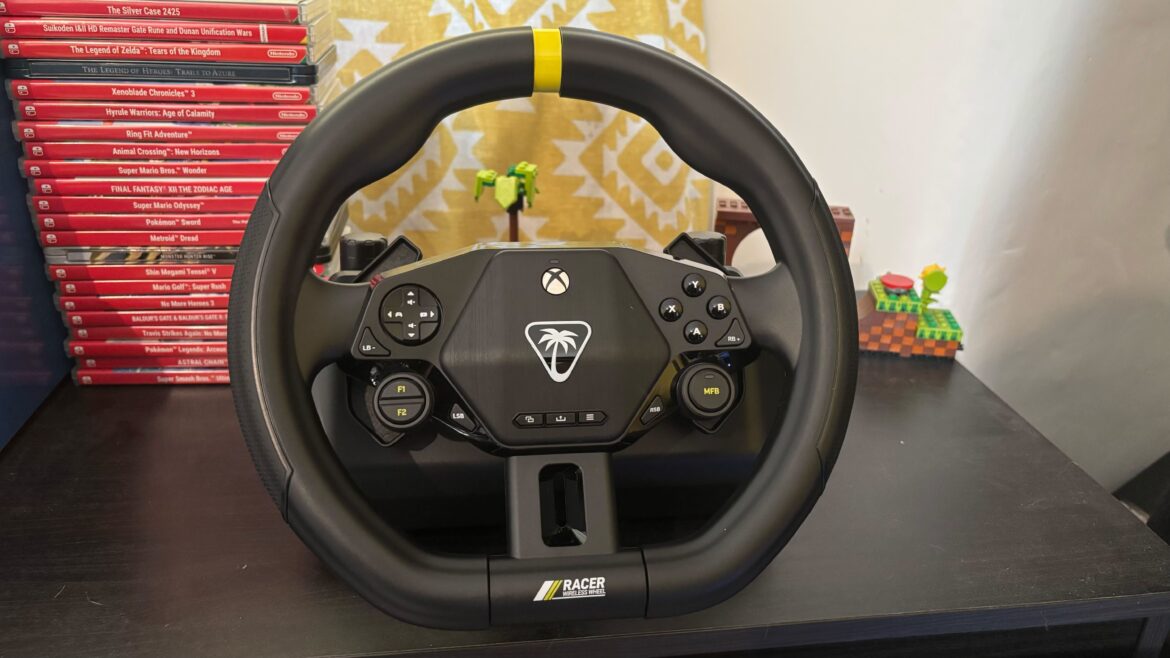Why you can trust TechRadar
We spend hours testing every product or service we review, so you can be sure you’re buying the best. Find out more about how we test.
Xiaomi OpenWear Stereo Pro: Two-minute review
“I can hear your music,” is something my mother used to tell me when I was young, worried that I’d damage my hearing by cranking my music too loud, and it’s something I’ve heard from multiple people since I started testing even the best open earbuds.
These safety-focused open-fit headphones don’t put the earbud in your ear but just outside it, letting you hear surrounding sounds – but until the Xiaomi OpenWear Stereo Pro came along, this also meant that people around you could hear the distant ring of your tunes too.
No more! Xiaomi’s sophomore open-ear offering fixes the problem, with a bespoke 10mm driver that’s designed to eradicate sound leakage, and does a decent job at stopping bystanders hearing your music. My local park was no longer regaled by early-morning Busted and Hansen sprints, which I’m sure the community was overjoyed with.
That driver’s just one of five nestled into each earbud, a surprising spec given that most earbuds have one and even top-end ones have only two or three, and you can see them arranged in a flower-like pattern on each bud. But my first-glance comparison between this layout and the look of the five-camera Nokia 9 PureView, which was the first smartphone to use this many rear sensors, continues further than I’d like. Just as that phone offered a packed spec-sheet that didn’t deliver as promising results in testing, the OpenWear Stereo Pro may have the hardware but can’t seem to make good on it to stand a cut above the rest.
For most of my testing, I listened on the default sound profile and the buds sounded awful, really tinny and compressed – luckily I discovered that changing to one of the other few audio presets clears up lots of my problems, adding depth and range, and I wish I hadn’t written most of this review before discovering that! Oh well, a few hours of rewrites gave me more time to review the buds.
That extra testing time didn’t give me extra insight on the design, which isn’t quite as robust or rigid as open-ears need to be for gym users. Doing exercises that don’t see me stand upright like sit-ups, skull-crushers or anything reclined saw gravity drag the buds away from my ears, though thankfully they were okay when running or cycling.
It’s in the feature set that Xiaomi goes some way in winning me over. I’ve already mentioned the sound leak suppression system but the company has also brought back an easily-toggled voice note recording system, which I’ve found really useful in quickly letting me leave reminders to myself.
Despite winning points back, though, the Stereo Pro level out as being ‘fine’ buds, instead of the solid ones they’d need to be to compete in this rapidly-growing and hotly contested market.
Xiaomi OpenWear Stereo Pro review: Price and release date
(Image credit: Future)
- Available from September 24, 2025
- Costs £139.99 (roughly $180, AU$280)
- In line with most open-ears
The Xiaomi OpenWear Stereo Pro were announced in September 2025 at a launch event by the company, which also included the Xiaomi 15T smartphone, some new versions of existing wearables and a few other bits and pieces.
The earbuds cost £139.99 (roughly $180, AU$280). A US release is unlikely given precedent, and an Australian one is possible due to Xiaomi releasing some of its earbuds there, but not guaranteed.
That price puts the Stereo Pro in line with most other open-ears, which generally sit between £100 and £160 (or $/AU$ equivalent), though some of our favorite options sit at the lower end of that spectrum. More on that in the Competition section below.
Xiaomi OpenWear Stereo Pro review: Specs
Swipe to scroll horizontally
Drivers
Tweeter + 2x balanced armatures + 18x13mm dynamic driver + 10mm driver
Active noise cancellation
No
Battery life (ANC off)
8.5 hours (buds) 45 hours (case)
Weight
9.7g (buds) 72g (case)
Connectivity
Bluetooth 5.4
Waterproofing
NA
Xiaomi OpenWear Stereo Pro review: Features
(Image credit: Future)
- Two useful features
- Presets, but no equalizer
- 8.5 hours of listening per charge
Xiaomi puts the battery life of the OpenWear Stereo Pro at 8.5 hours for the buds, a figure which my own testing gave me no reason to doubt. The charging case bumps that up to 45 hours and both are slightly above average, the case figure to a commendable degree.
The Xiaomi Earbuds app for your phone or tablet gives you some extra control over your buds, with the ability to customise touch controls and jump between a few sound profiles (like EQ presets, but without there being an actual EQ). I’ll mention these in more detail later but it’s not quite as much as customization as other buds give you.
The flashy feature that’s designed to make the Stereo Pro stand out from the crowd is a driver which is designed to stop sound leaking. By ‘leaking’, I mean music from the buds that people around you can hear, which is both annoying for them and embarrassing for you (especially if your music taste is poor but trust me, we’re all judging you).
From my testing (and my partner’s, due to her being my guinea pig) the feature does a decent job at reducing sound leaking. It doesn’t totally remove it and sound leaking is still apparent, but it downplays open earbuds’ natural tendency to spread music around (due to the design). It’s most efficient in public areas where it brings your music just quiet enough to be drowned out by background noises.
Another feature present, that Xiaomi has ported over from its standard earbuds, is a recording mode. You can enable this with a gesture command, and it records audio from the buds or, apparently, a built-in speaker in the case.
It’s a useful feature for people who like to record their own voice notes on the go (let’s be honest: it’s a lot easier than using your phone’s notes app) but many countries have laws against recording unawares people, so you’ve been warned.
Throughout testing, I bumped up against a problem that seemed to be a connectivity one, rather than a sound one, though it did affect the audio. Now and then the buds would jump between tunings, from the usual one to an extra-compressed one and back again after a few seconds. There was no way of controlling or pre-empting this. I put it down to a connectivity issue because from time to time the buds would also lose connection for a few moments, a problem likely linked.
Xiaomi OpenWear Stereo Pro review: Design
(Image credit: Future)
- Very shiny earbuds
- Comfortable to wear but unreliable hold
- Hardy carry case
If you’re familiar with the look of open earbuds, the thing that’ll hit you about the Xiaomi OpenWear Stereo Pro is just how shiny they are. The counterweight and bud both come with a sheen so clean you can do your hair in them, making them look really rather premium. You can pick up the buds in gray, white or, like my test unit, rose gold.
And if we’re making judgements based on appearance, seeing the five drivers on the other side, complete with the text ‘5-driver sound system, designed by Xiaomi’ makes a loud statement about the buds’ audio quality.
Each bud weighs 9.7g, which is a little more than some rivals I’ve tested, but it doesn’t tell. They’re comfortable to wear for long gym sessions or trips, though when I wore them for my workout the bud would often move away from my ear if I leant down or lay down. I’ve found this problem in a few other open-ears and it seems to happen most when the material connecting the bud and counterweight is weak, and therefore unable to hold the bud rigidly.
The case is an oval clamshell that retains your color choice from the bud – and again, has a little ‘designed by Xiaomi’ in case you forget who made it (the name appears four times across the case and buds, not counting a little removable information sticker on the case).
Strong magnets grip the Stereo Pro when you put them in the case, so I never needed to fuss much about putting them in perfectly, which was handy when I wanted to sheathe the Xiaomi in a hurry. Features of the case include a USB-C charging port and pairing button but not much else.
Pre-release information provided to TechRadar didn’t mention an IP rating for the buds or case, so keep them safe from rain.
Xiaomi OpenWear Stereo Pro review: Sound quality
- Five drivers per bud
- Default sound profile is bad
- Low max volume
(Image credit: Future)
A glance at the Xiaomi OpenWear Stereo Pro’s specs list sets up high expectations for the buds’ audio chops, and that’s because each bud has a startling five drivers (most rivals have one).
There’s a tweeter for refining treble, dual balanced armatures aimed again at higher-frequency tones, an 18x13mm dynamic driver that’s targeted at bass and the aforementioned 10mm sound leak reducer. And if that overwhelming hardware list somehow doesn’t impress you, perhaps the support for Hi-Res Audio and LDAC, SBC and AAC codecs will.
After reading all those specs, seeing the five drivers individually presented on the earbuds in a distinct way, and setting up my expectations fittingly, I was pretty shocked to discover that the Stereo Pro don’t sound good at all. In fact, I wrote a pretty scathing review of the sound – and then connected the buds to the phone app (not available immediately because I had early access to my review sample), changed from the default sound profile and found most of my issues vanish. If you’ve just bought these buds, make this change straight away.
In their default sound profile, the Xiaomi OpenWear Stereo Pro sound tinny, compressing a multitude of instruments into one sound and losing the details from almost all of them. In rock songs instruments like rhythm guitar, accompaniment keys and backing vocals are muddled and drum lines and more prominent guitar lines are akin to sleigh bells for how jangling they sound. Reverb fills the space that a detailed soundstage should take up.
Changing from the default sound profile really widens instruments, as well as the soundstage (though if you’re a masochist, the in-app toggle to increase the dynamic range turns the tinniness up to 11). It doesn’t make audio sound great, but it brings it in line with other open-ears.
The drivers’ emphasis on higher-end audio helps vocals and guitar solos stand out, and while there’s sufficient bass it sounds ill-defined and loose unless you fix it in the equalizer. Most of the time, it turns songs into a wall of distorted sound in which you can’t make up the textural details. I can see some listeners being okay with this aspect of the buds, especially ones who like high-powered metal music, but bear in mind that if you try head-banging these buds are going to go flying.
The buds don’t even go very loud, so I sometimes struggled to hear music when I was nearby a road.
Xiaomi OpenWear Stereo Pro review: Value
(Image credit: Future)
- Your money could go further
- …unless you want those features
As mentioned before, the Xiaomi OpenWear Stereo Pro sit around the average price of open earbuds, and also as mentioned, there’s lots of competition.
In fact, some of our favorite options are cheaper, making Xiaomi’s offering feel hard to recommend given that its performance also doesn’t match up.
The exception to this is whether or not the buds’ features sound enough to win you over, but for me, the sound quality is a sticking point.
Should I buy the Xiaomi OpenWear Stereo Pro?
(Image credit: Future)Swipe to scroll horizontallyXiaomi Openwear Stereo Pro score card
Attributes
Notes
Rating
Features
The decent battery life and useful extras make up for the wobbly connection.
4/5
Design
The buds are flashy and shiny with handy touch controls but the buds aren’t held in place reliably.
3.5/5
Sound quality
The Stereo Pro gives unconvincing sound, even when you’ve turned off the poor default mode.
3/5
Value
There’s bound to be something that works better within your budget… unless the features appeal to you.
3/5
Buy them if…
Don’t buy them if…
Xiaomi Openwear Stereo Pro review: Also consider
Swipe to scroll horizontallyHeader Cell – Column 0
Xiaomi Openwear Stereo Pro
Huawei FreeArc
Honor Earbuds Open
Technics EAH-AZ100
Drivers
Tweeter + 2x balanced armatures + 18x13mm dynamic driver + 10mm driver
17x12mm
16mm
17x12mm
Active noise cancellation
No
No
Yes
No
Battery life
8.5 hours (buds) 45 hours (case)
7 hours (buds) 28 hours (total)
6 hours (buds) 40 hours (total)
7.5 hours (buds) 38.5 hours (case)
Weight
9.7g / charging case: 72g
8.9g / charging case: 67g
7.9g / charging case: 52.5g
9.6g / charging case: 88g
Connectivity
Bluetooth 5.4
Bluetooth 5.2
Bluetooth 5.2
Bluetooth 5.4
Waterproofing
NA
IP57
IP54
IP54
How I tested the Xiaomi OpenWear Stereo Pro
(Image credit: Future)
- Tested for two weeks
- Tested at home, in the office, on runs, at the gym and while cycling
I used the Xiaomi OpenWear Stereo Pro for two weeks before writing this review, which is the standard TechRadar testing time.
During the testing period I used the buds at home, on walks around my neighborhood, on runs, at the gym, while cycling and on busy public transport. I paired them to my Android smartphone and most of the testing was done on Spotify and Netflix.
I’ve been reviewing gadgets for TechRadar for nearly six years, which has included lots of Xiaomi gadgets in the past. For the last year I’ve been reviewing countless open earbuds, and so have a lot of experience in the area with which to compare the Xiaomis.
- First reviewed in September 2025
Xiaomi OpenWear Stereo Pro: Price Comparison




